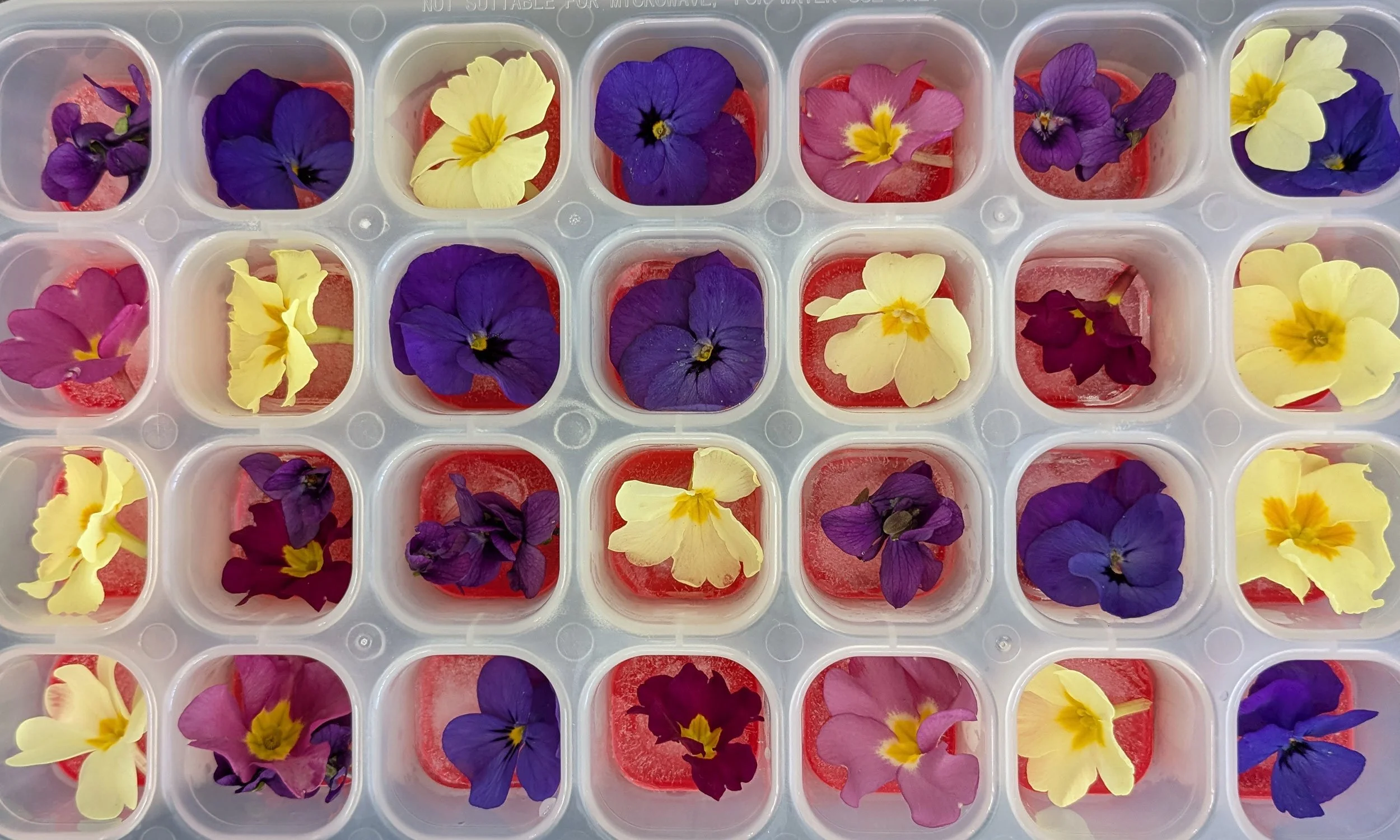Mainly about Primroses
Primroses appeared very early in the garden this year, they continue to flourish and raise the spirits on chilly, dull days. Among the first flowers to appear Primroses are an important source of pollen and nectar for insects such as the garden bumblebee and hungry emerging moths and butterflies, although insects emerging in our garden, at the moment, seem to prefer Daffodils and Hellebores.
Whist the traditional Primrose Vulgaris is a pale yellow, hybridised versions in all sorts of colours grow in the garden too.
Many years ago, primroses grew in such abundance in the countryside that they were picked, tied into posies, wrapped in tissue paper and packed carefully in boxes by rural families to be sent by train to big cities where they were sold at a premium. Even now, a posy in a recycled jam jar still makes a lovely gift.
Picking the occasional bunch brings back happy memories of providing flowers to decorate the Fitzhead Church window ledges at Easter time.
Included in the following images are some vintage Kate watercolours (with a touch of watercolour crayon) of Polyanthus and a hybridised Primrose that I painted around this time in the late 1980s as gifts for my mother Joan.
It’s fun to capture some primrose flower heads in ice cubes trays along with other edible Spring flowers such as Sweet Violet and Pansies.
A scattering of flowers on a Victoria Sponge seemed a lovely way to echo Spring in the garden, the flowers were eaten along with Apricot jam and buttercream filled cake.
A lovely plant to celebrate!
Note: The name Primrose originates from the old Latin ‘prima’, meaning first, and rosa, meaning rose. It’s thought that the Polyanthus, known in gardens since the 17th century, probably originates from crosses between coloured forms of the primrose and the cowslip.
The primrose symbolizes innocence, youth, and new beginnings.
It‘s primarily a wild plant often found at the edge of woods or in the grassy banks of hedgerows.












